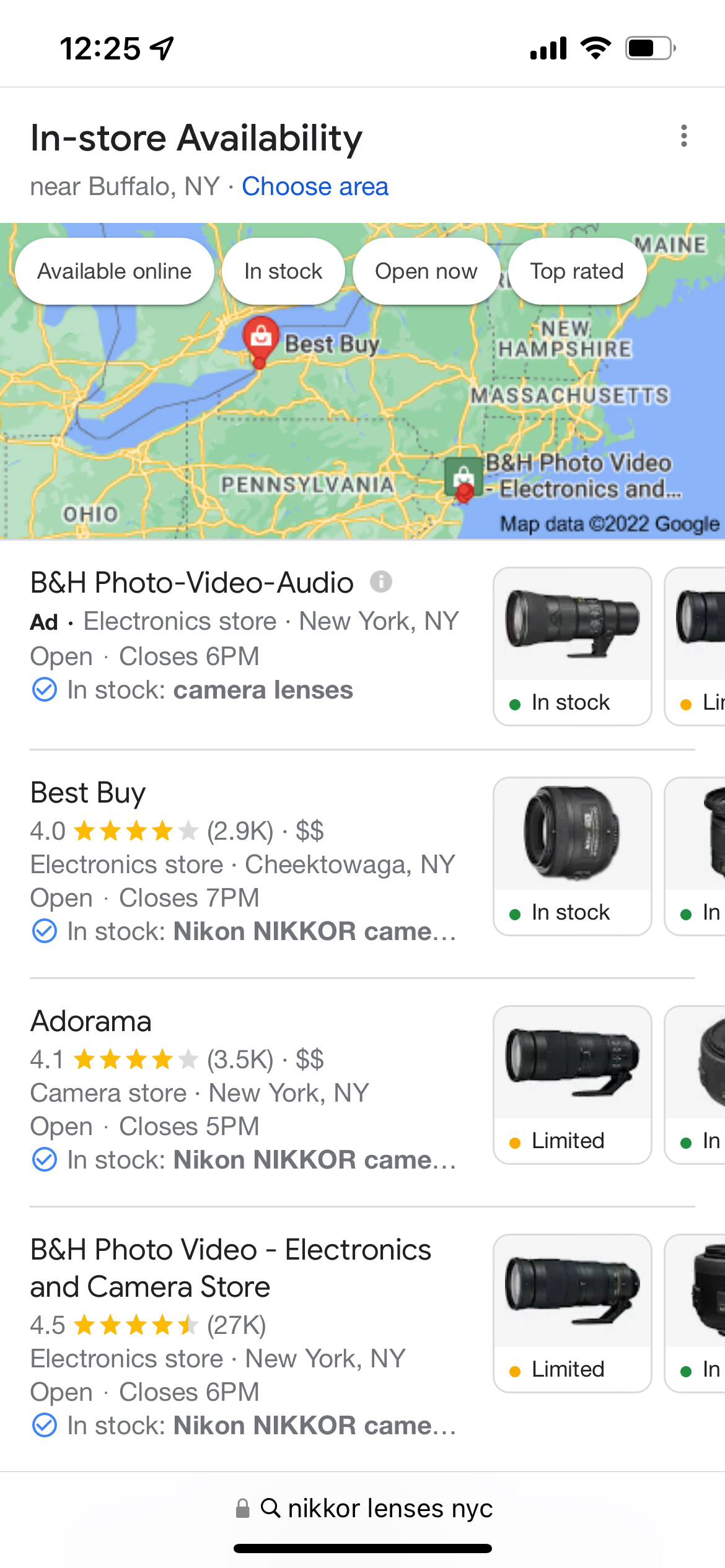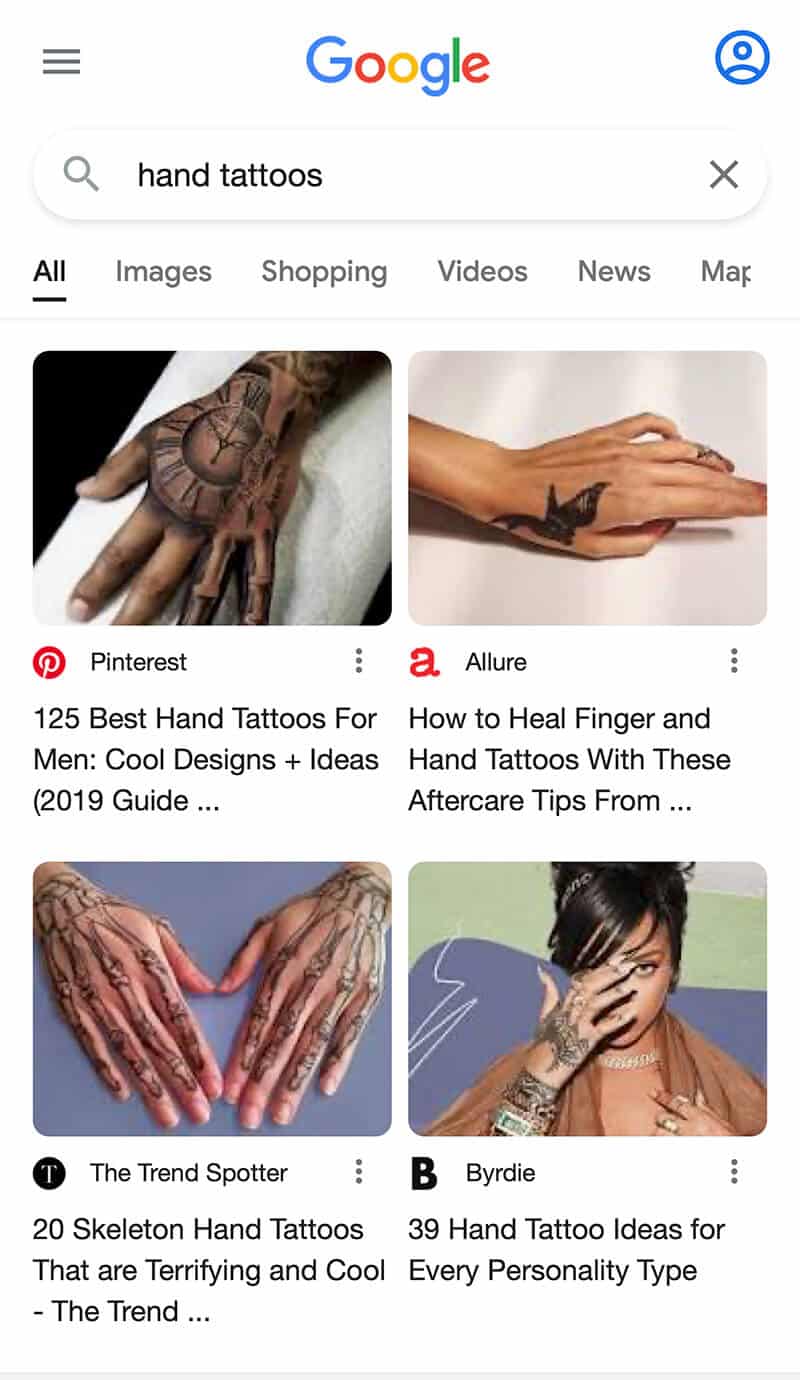
The Growth of Visual Search
Pictures are popping up in more and more search contexts these days. For local, we’ve been noticing for a couple of years now the intrusion of prominent images in more and more Google local pack and local finder results. Toward the end of last year, when Google launched a redesigned, more prominent local pack that now takes up the entire above-the-fold SERP on many desktops, images in local results became even larger and more prominent. In the redesigned mobile SERP, where image carousels have been showing up in local results for some time, these images now switch to an enlarged view when the user begins swiping through the carousel.
High-traffic general searches for terms like “Mexican restaurant” or “department store” will typically return results that showcase basic storefront images — often the same image that has been set as the cover photo in GBP. When it comes to long-tail searches, Google digs deep into the photo gallery to pull image content based on the intent of the query. These photos may come from the business owner, though most photos in business profiles today are uploaded by Google users who have visited the business.
Google displays select photos of products and services for highly specific queries like “handmade jewelry near me” or “Halloween masks near me” with impressive precision (try it yourself). Google can do this because local search utilizes the company’s Vision AI, the same image analysis technology that powers Google Images as well as visual search in Google Lens. User-generated content is messy, and Google knew it couldn’t rely on consistent and accurate image tags in order to identify the content of photos, so it built an AI-driven solution that tags content automatically.
Google’s image analysis capabilities are powerful, and the company appears to be executing a long-term strategy to broaden their utilization across multiple tools and interfaces. Mike Blumenthal recently reported on the appearance of shoppable product photos in local results on mobile based on Merchant Center store inventory, an even stronger driver of potential conversions than images from business profiles. These product images, like image-based product results that have appeared previously in other search contexts, are tappable and take the user to Google Shopping, where they can tap again to compete a transaction with the merchant carrying the product.

Local isn’t the only context where images are becoming more prominent in search. In recent months, users have noticed featured photos pulled from websites appearing more frequently in organic search results. Brodie Clark recently shared the news that Google has launched Visual Stories, a new page component in mobile search results that is now live in the US. Visual Stories is the section of the SERP that displays Web Stories, a tappable format for web pages designed to display as a series of full-screen images (they can also incorporate audio and video). Content that qualifies for inclusion in Visual Stories will be featured prominently in the mobile SERP with an image-based display.
In a similar development, Barry Schwartz tells us that Google has launched a more visually oriented version of the overall mobile SERP that now displays for select queries such as “hand tattoos” and “game room design.” This new spin on the mobile SERP uses featured images from listed websites in a grid layout, where the images become the most prominent elements on the page. The impact is not unlike the image-centered layout of Pinterest, or like Bing results, which have long been richer with images than Google.

Of course, these are dated references in comparison with the other likely external inspirations for Google’s forays into the visual medium. It’s really the success of visual-first platforms like Instagram, Snapchat, and TikTok, by far the preferred platforms of smartphone-centric younger consumers, that is likely spurring Google to think about images as the focal points of search. Images convey information in a highly efficient manner, much more quickly and succinctly than text, with a universality that can overcome boundaries of language, culture, and idiom. The younger demographics are highly acclimated to interfaces where text is secondary to image, and search appears to be dramatically transforming itself to meet these new expectations.
Claire Carlile, in a recent post on visual search that contains useful tips for local businesses, shows us that Google is now making it possible to conduct a search that starts and ends with images. Her example search is conducted using Google Lens, where an image of a Sony headphones package is the “query” that produces a local pack result replete with its own images. This may or may not be the future of search, but it’s highly representative of the visual-first orientation that Google is embracing to a growing degree.




